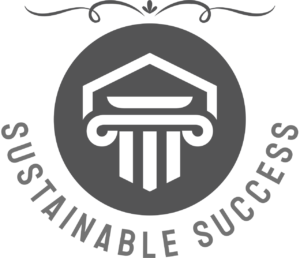In an era defined by climate change and growing environmental concerns, the corporate world is faced with an increasingly urgent challenge: How can businesses balance profitability with environmental responsibility? This article delves into the intricate relationship between profits and the planet, shedding light on effective sustainability practices that enterprises can adopt to thrive in this new paradigm.
I. The Business Case for Sustainability
A. Beyond Profit Maximization
Historically, businesses have been primarily focused on maximizing profits. However, the landscape is shifting, and sustainability is emerging as a critical factor in long-term profitability. By addressing environmental and social issues, companies can enhance their reputation, mitigate risks, and tap into new markets, ultimately bolstering their bottom line.
B. Risk Mitigation
Climate change, resource scarcity, and social unrest pose significant risks to businesses. Adopting sustainable practices can help companies build resilience and adapt to a rapidly changing world. From supply chain disruptions to regulatory changes, sustainability is a powerful tool for managing risks.
II. Sustainable Practices for Enterprises
A. Sustainable Supply Chains
Procurement and Sourcing
Sourcing materials and products responsibly is fundamental to sustainability. Enterprises can reduce their ecological footprint by choosing suppliers committed to ethical and environmentally friendly practices. Transparency and traceability are key.
Lean and Circular Supply Chains
Adopting lean and circular supply chain principles can minimize waste and promote resource efficiency. Enterprises can implement strategies like just-in-time production and recycling initiatives to reduce their impact on the planet while improving cost-effectiveness.
B. Energy Efficiency
Renewable Energy Adoption
Switching to renewable energy sources such as solar and wind power can significantly reduce a company’s carbon footprint. In addition to environmental benefits, renewable energy can also lead to long-term cost savings.
Energy-Efficient Technologies
Embracing energy-efficient technologies and practices within operations can contribute to both sustainability and profitability. This includes LED lighting, smart building management systems, and efficient machinery.
C. Sustainable Product Design and Innovation
Life-Cycle Assessments
Companies can conduct life-cycle assessments to evaluate the environmental impact of their products from raw material extraction to disposal. This holistic approach enables the design of more eco-friendly products.
Eco-Design Principles
Incorporating eco-design principles like modular components, recyclable materials, and repairability can extend the lifespan of products and reduce waste generation.
III. Measuring and Reporting Sustainability
A. Key Performance Indicators (KPIs)
Establishing sustainability KPIs allows companies to track their progress and set targets for improvement. Common KPIs include carbon emissions, water usage, waste reduction, and energy consumption.
B. Sustainability Reporting
Transparency is paramount in sustainability efforts. Companies can publish annual sustainability reports that communicate their goals, achievements, and challenges to stakeholders. Reporting helps build trust and accountability.
IV. Engaging Stakeholders
A. Employee Engagement
Sustainability should be ingrained in a company’s culture. Engaging employees through education, incentives, and participation in sustainability initiatives can foster a sense of shared responsibility.
B. Collaboration with Suppliers
Collaboration with suppliers is crucial for implementing sustainable practices throughout the supply chain. Enterprises can work closely with suppliers to ensure alignment with sustainability goals.
C. Stakeholder Communication
Effective communication with stakeholders, including customers, investors, and the public, is essential. Companies can showcase their sustainability efforts, creating brand loyalty and attracting socially conscious consumers and investors.
V. Overcoming Challenges
A. Initial Investment
Transitioning to sustainable practices may require an initial financial investment. However, the long-term benefits, including cost savings and brand enhancement, often outweigh these upfront costs.
B. Regulatory Compliance
Navigating the complex landscape of environmental regulations can be challenging. Companies must stay informed and adapt their practices to comply with evolving laws and standards.
Takeaway
Balancing profits and the planet is no longer a choice but a necessity for enterprises in the 21st century. By embracing sustainability practices, companies can unlock new opportunities, reduce risks, and contribute to a more sustainable future. The journey toward sustainability may be demanding, but the rewards are worth the effort. As businesses align their interests with the well-being of the planet, they will not only prosper financially but also leave a positive legacy for generations to come.

